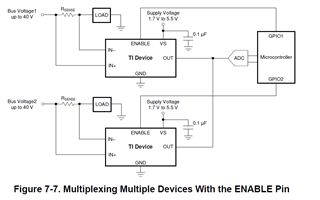Other Parts Discussed in Thread: INA237, INA236, INA238, INA228, INA229, INA121, INA191, INA2191
Hi there, we are planning to use the INA190 in our project to measure the system current in Active Mode and Sleep Mode.
Here are some details:
a. The INA190 will be used in Unidirectional High-Side Configuration
b. We want to measure a current of 100uA in Sleep Mode and around 300mA in Active Mode and the supply voltage is around 3.3VDC
c. INA190 has a very low input bias current, so that should not affect the our current measurement values since its way below the minimum threshold
d. The INA190 has an offset voltage of around 15uV so that means that the Min Vsense across the shunt has to be 1.5mV for the Offset Error to be 1%?
I have done various calculations and it seems difficult to use a single SHUNT and a single INA to accurately measure the current in the range of 100uA~300mA without compromising too much on Burden Voltage, Power Dissipation and Accuracy in %.
Are there any INAs or Solutions from TI that is better suited for the above use scenario?
Thank You


